Table of Content
Scottish weddings are renowned for their deep-rooted traditions, combining Celtic heritage with unique local customs that add an unforgettable charm to the celebrations. From symbolic gestures like exchanging a quaich to heartfelt ceremonies such as handfasting, these wedding traditions Scotland connect modern-day couples with Scotland’s storied past. This article explores some of the most meaningful and interesting Scottish wedding traditions that continue to capture the hearts of brides, grooms, and guests alike.
Origins of Scottish Wedding Traditions
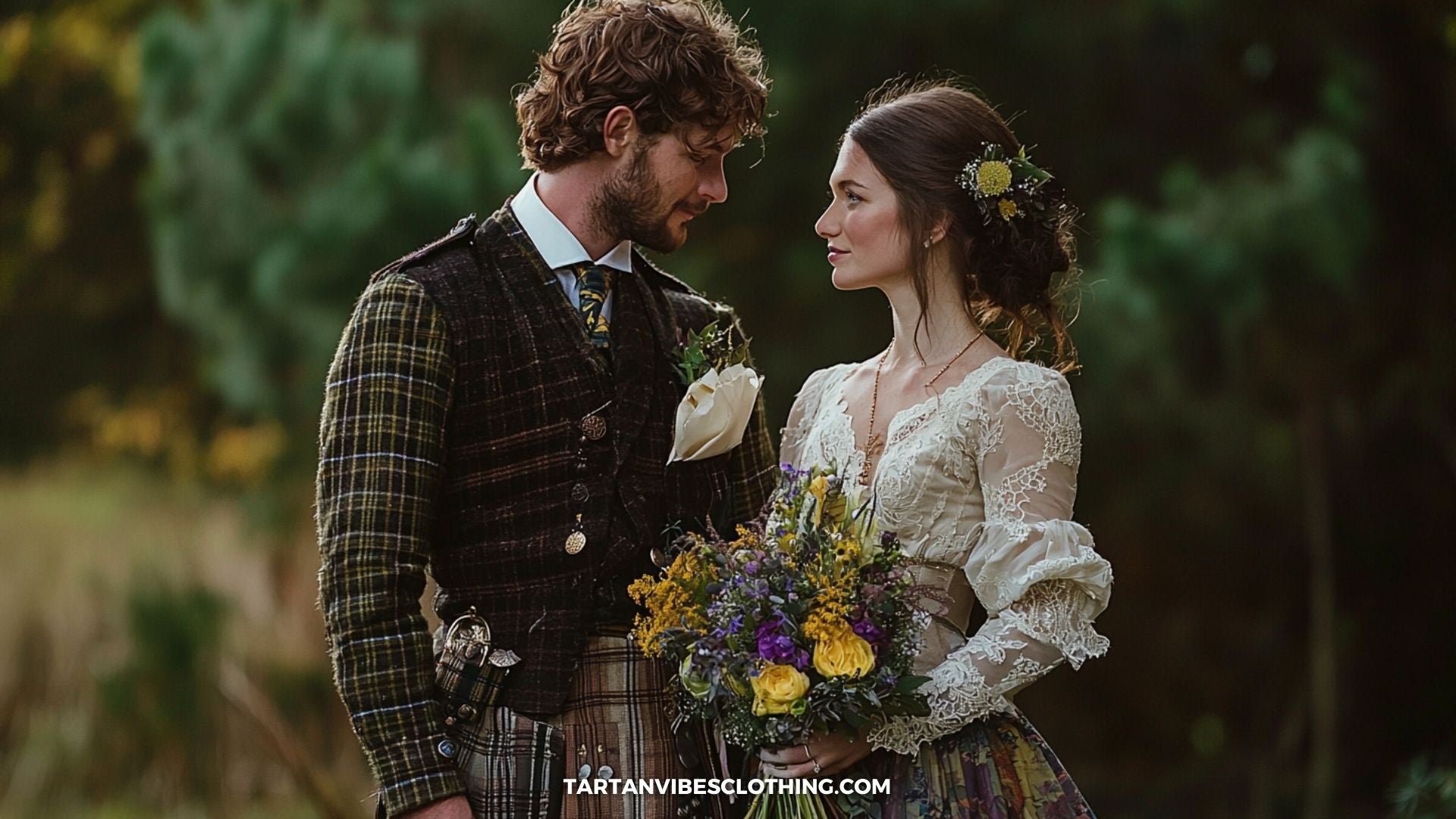
Scottish wedding traditions are a rich blend of ancient Highland customs, Celtic rituals, Norse influences, and early Christian practices, creating a distinctive heritage that couples still celebrate today. These traditions trace back centuries, with many customs formalized around the 13th century when the medieval Celtic church introduced the practice of proclaiming the “banns of marriage” for three successive Sundays. This public announcement, confirming a couple’s intent to marry, remained a common practice for over 600 years before evolving into the current process of notifying a registry office.
The origins of traditional Scottish wedding customs reflect deep-rooted Celtic beliefs, viewing marriage as a spiritual union intertwined with nature and symbolism. Norse culture later contributed values of honor and loyalty, while early Christianity introduced blessings and sacramental vows into wedding ceremonies. This mix of influences has shaped Scottish wedding traditions, allowing modern couples to honor love, commitment, and cultural heritage with ceremonies deeply tied to Scotland’s storied past.
A Guide to Enduring Scottish Wedding Traditions
1. Handfasting
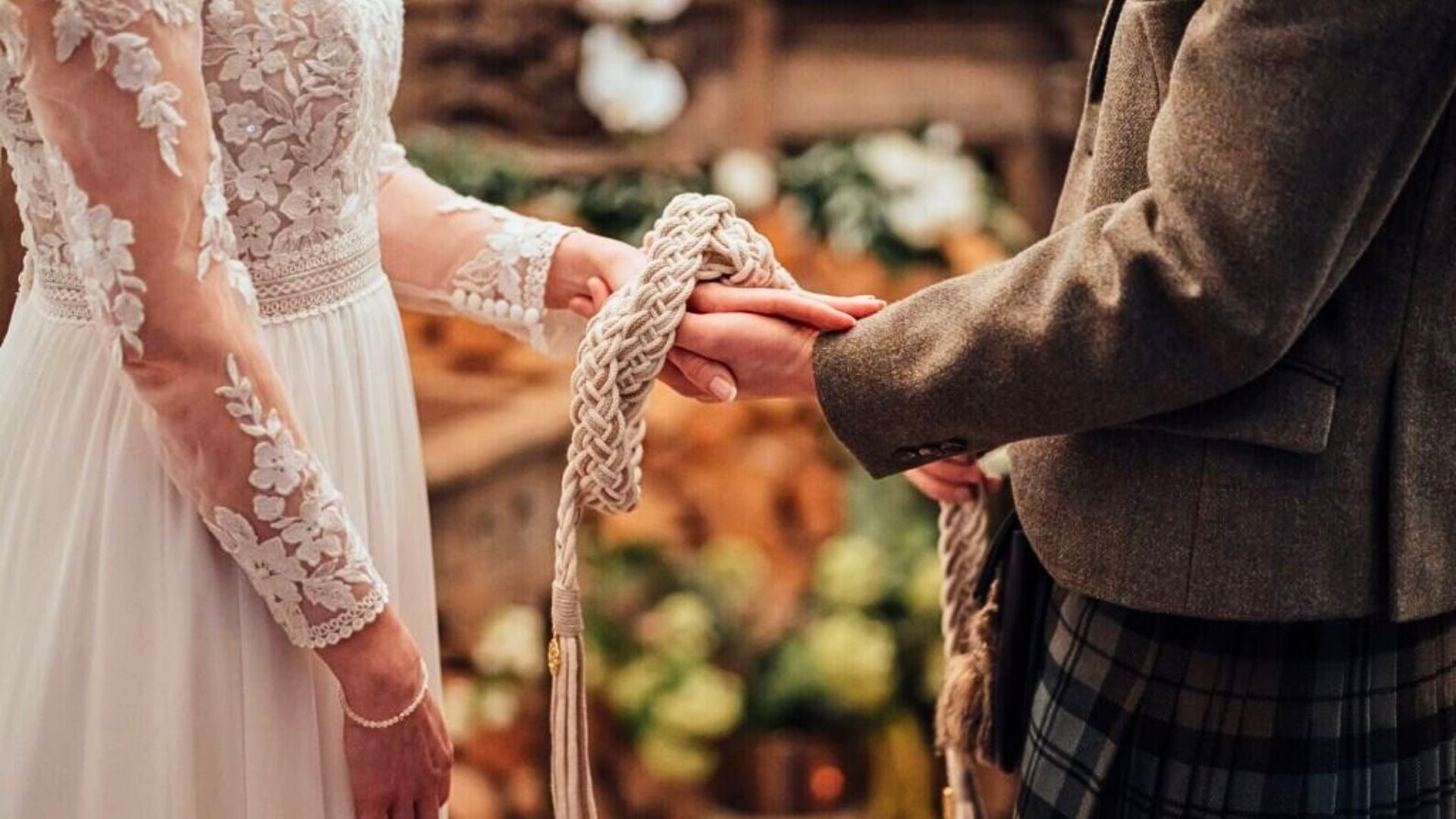
Handfasting is a beloved example of Scottish wedding traditions rooted in ancient Celtic culture, famously featured in the film Braveheart during a forest marriage scene. This ceremony involves binding the couple’s hands with a ceremonial handfasting cord, symbolizing their union, commitment, and merging of lives. The term "handfasting" means making a pledge or contract, and this ritual is a powerful representation of the couple’s commitment.
A loved one or officiant usually performs the handfasting, wrapping fabric or ribbon around the couple's hands, creating a unique pattern or knot. This binding gesture honors their Celtic or Scottish heritage, linking them to their ancestral traditions. Often, a blessing accompanies the handfasting, emphasizing the strength of their union, the growth of their love, and their journey toward wisdom together. This sacred act remains popular among young couples today for its beauty and connection to history.
2. Quaich
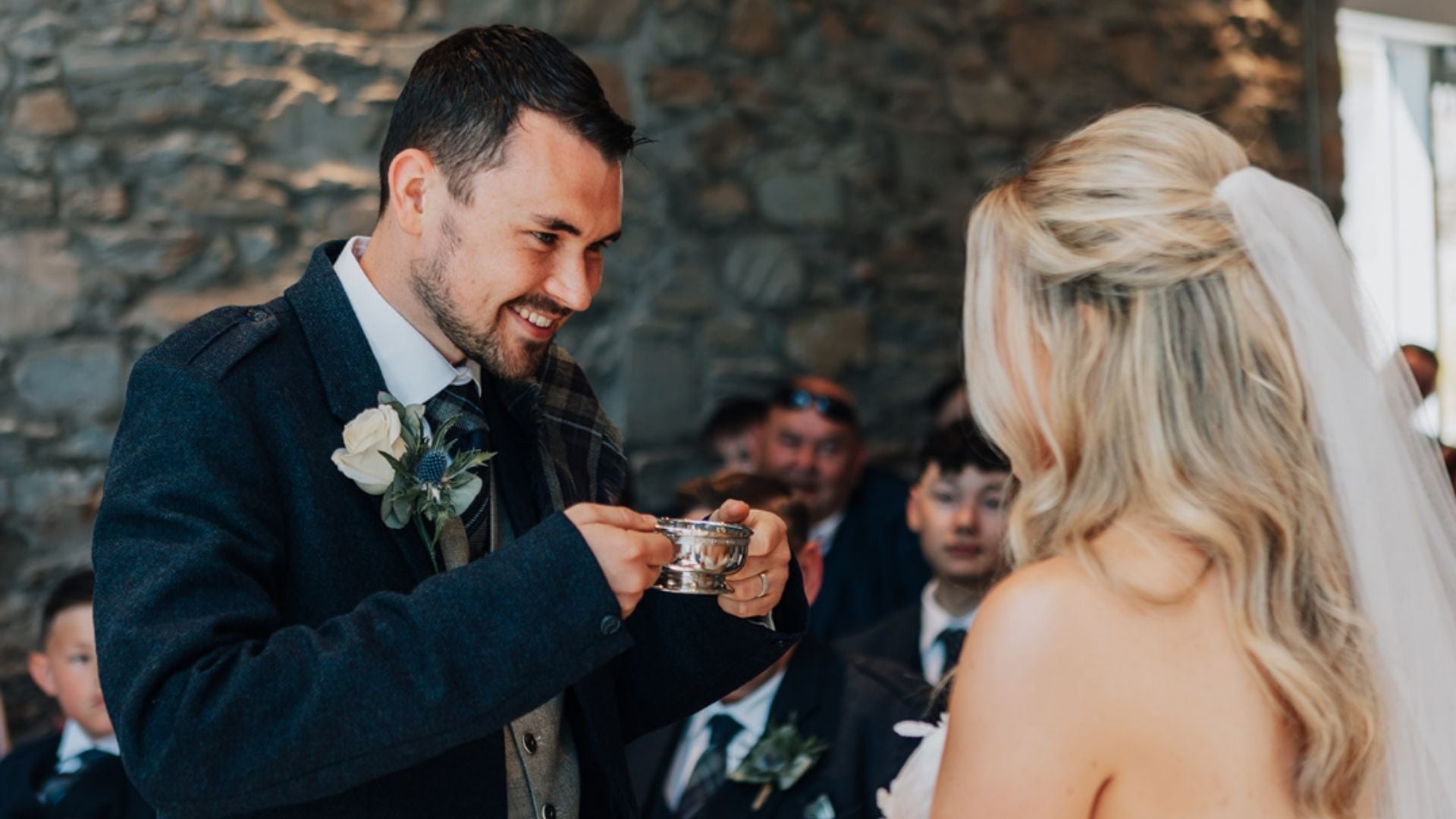
The Quaich, or Scottish "love cup," has held significance in Scottish wedding ceremonies since 1589, when King James VI gifted one to Anne of Denmark. This two-handled cup symbolizes trust, unity, and the act of sharing, representing the hands of the couple joined in partnership. Traditionally made of wood, pewter, or silver, the Quaich is often adorned with engravings, family crests, or symbols that carry meaning for the couple.
During the wedding, a close friend or family member presents the Quaich to the couple, who drink from it, symbolizing their shared commitment and love. Often filled with whisky, mead, or another special drink, the Quaich ceremony is a meaningful moment in which the couple raises the cup to celebrate their new life together. Historically, the Quaich’s two handles symbolized peace, as both hands held the cup, ensuring that neither participant wielded a weapon. This ceremonial act of drinking represents unity, hospitality, and trust—a deeply rooted Scottish tradition embraced by couples today.
3. Ceilidh
Ceilidh, a lively and social form of Scottish dance, is a beloved tradition at Scottish weddings. Originating from Gaelic culture, this post-wedding celebration involves upbeat music and energetic group dances that bring joy and laughter to the guests. Ceilidh dances are inclusive and require minimal instruction, making them accessible and enjoyable for guests of all abilities. Popular dances include the Flying Scotsman, Gay Gordons, and Strip the Willow, each involving dynamic moves like spinning and skipping that encourage an enthusiastic crowd.
A "Ceilidh caller" often attends to guide guests through the steps, ensuring everyone can join in the fun. The variety of dance styles available, from the Military Two-Step to the Dashing White Sergeant, means there’s something for everyone. Ceilidh is a vibrant tradition that captures the spirit of community and celebration, allowing guests to experience an authentic piece of Scottish culture while creating lasting memories of the wedding day.
4. Footwashing
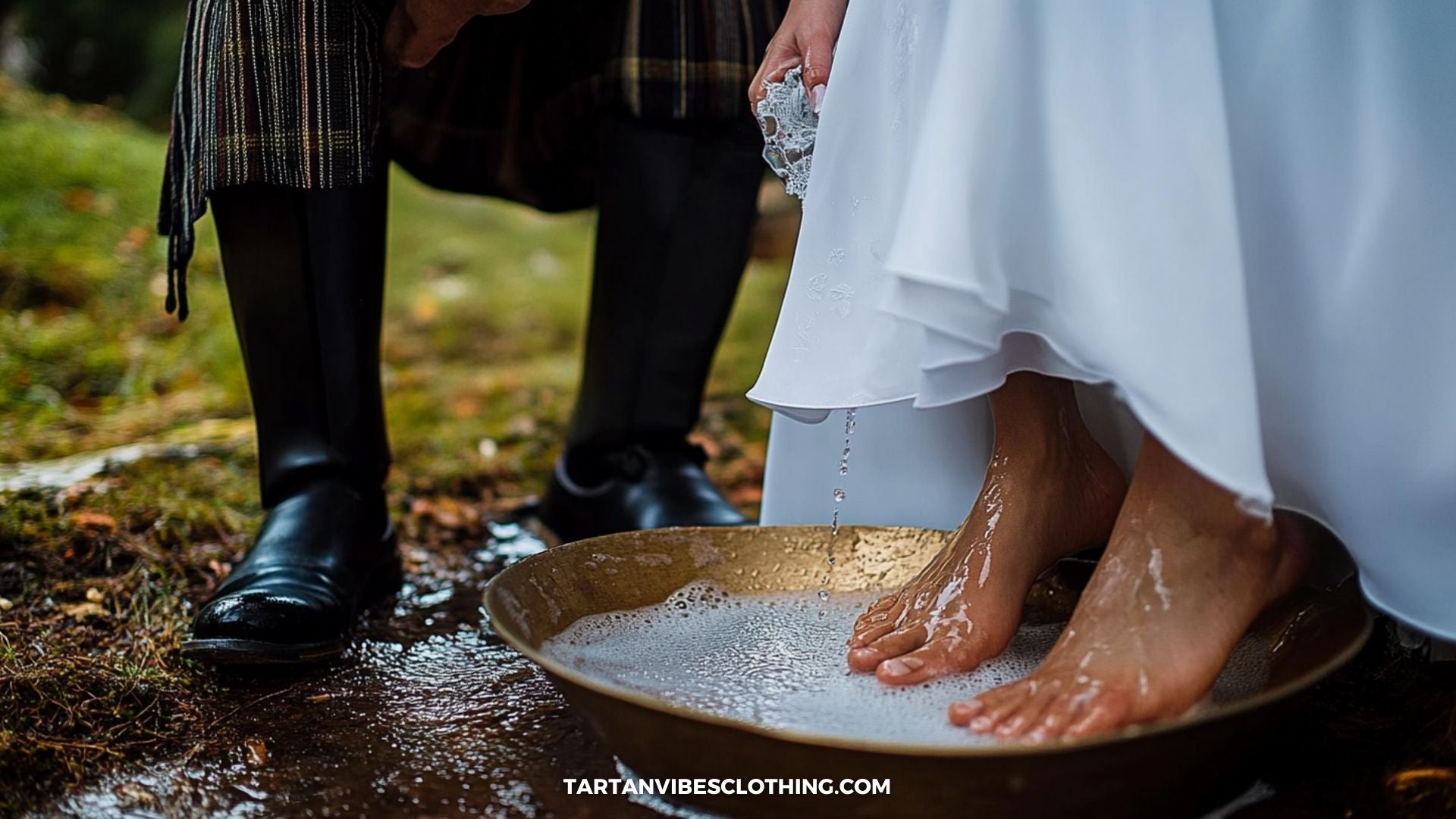
Footwashing is a cherished Scottish pre-wedding tradition in Fife, Dundee, and Angus. In this custom, a senior, happily married family member—typically a woman—washes the bride’s feet on the morning of the wedding. This gentle act is said to bless the bride with purity, good luck, and fortune as she begins her married life.
In some variations, a ring may be placed in the water, and the first unmarried woman to find it is believed to be next in line for marriage. By choosing someone significant within the family to perform the footwashing, the bride honors her roots while embracing a meaningful Scottish ritual that symbolizes the blessings of family and fortune on her special day.
5. Luckenbooth
The Luckenbooth brooch is a token of love and commitment in Scottish wedding traditions, often given to the bride by the groom. This silver jewelry, crafted with two intertwined hearts beneath a crown, symbolizes love, loyalty, and good fortune. The tradition dates back to Edinburgh’s historic Luckenbooths, the first permanent jewelry shops in the 15th century.
Historically, the Luckenbooth was believed to ward off evil spirits and protect the marriage. Today, it’s often passed down through generations as a keepsake, sometimes adorned with meaningful stones like amethyst, representing the thistle or garnets, signifying love and constancy. By wearing the Luckenbooth, brides carry a powerful symbol of affection and heritage, connecting them to their Scottish roots in a beautifully enduring way.

6. Oathing stone

The Oathing Stone ceremony is a unique and meaningful way for couples to “set their vows in stone”, symbolizing strength, endurance, and an unbreakable commitment. In this tradition, couples place their hands on a stone while reciting their vows, which is believed to bind their promises in a tangible, lasting way. Some couples choose a special stone from a significant location, adding personal meaning to the ritual.
Historically, an oath over a stone or by water was said to make commitments binding. Today, many couples personalize the tradition by engraving a stone with their names and wedding dates or by involving guests in decorating small stones. This ancient ritual allows couples to symbolically ground their union in nature and history, embracing a tradition that signifies strength, resilience, and love.
7. Piper
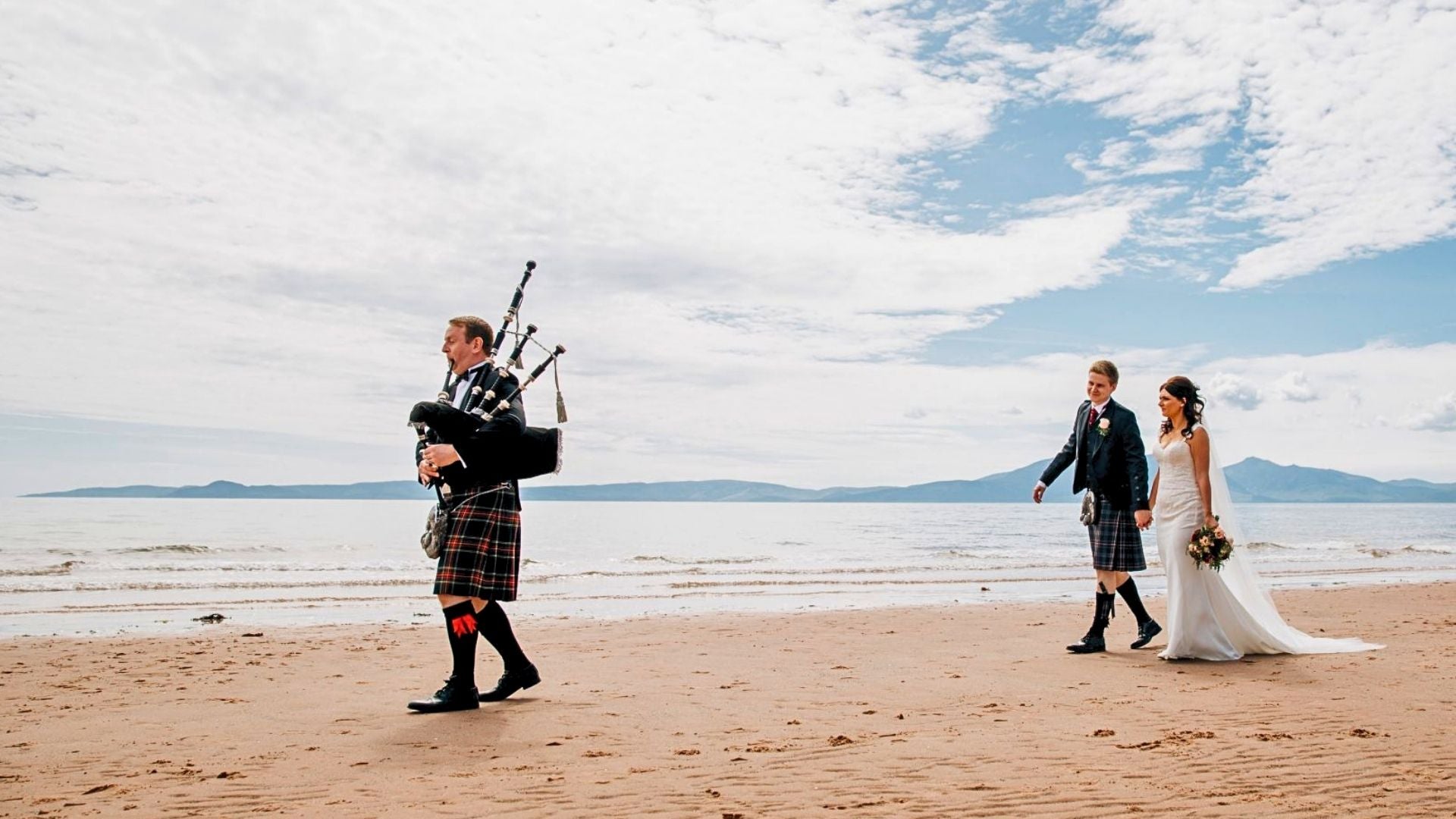
The piper, with the distinctive sound of Scottish bagpipes, is an iconic presence at many Scottish weddings. The tradition holds that the skirl of the pipes wards off evil spirits and blesses the couple with good luck as they embark on their married life. The piper’s role begins with leading the bride to the ceremony, filling the air with classic Scottish tunes like “Highland Cathedral” or “Flower of Scotland”.
After the ceremony, the piper often leads the couple and their guests into the dining area, clapping and stamping accompanying the lively music. It’s customary for the groom to “pay the piper” with a dram of whisky, often served in a Quaich, symbolizing respect and gratitude. Today, a Scottish wedding wouldn’t be complete without a piper’s music, which adds a touch of tradition, joy, and protective charm to the celebration.
8. Sixpence in the Shoe

The “Sixpence in the Shoe” tradition is a cherished Scottish custom intended to bring good fortune and financial prosperity to the bride’s new marriage. Traditionally, on the wedding morning, the bride’s father would place a sixpence coin in her shoe as a symbolic blessing. Originating in regions like Aberdeen and Angus, this small coin represented financial stability. It was believed to bring luck to the couple’s union.
Although sixpences are no longer part of British currency, brides today often purchase replica coins online to continue the tradition. Some brides place the coin in the heel of their shoe for comfort, keeping the custom alive while embracing modern practicality. This simple gesture continues to symbolize prosperity and a cherished Scottish wedding ritual that adds a touch of heritage to the wedding day.
9. Celtic wedding traditions
Celtic wedding traditions are woven deeply into Scottish culture, originating in ancient pagan and Gaelic customs. Many traditions, such as “tying the knot”, involve symbolic acts that emphasize unity, spirituality, and the merging of two families. In the knot-tying ritual, the bride and groom tear strips of their clan tartans and tie them together, symbolizing the binding of two lives and lineages.
Unique customs exist across the Scottish Isles, where local traditions bring extra meaning to the wedding day. For example, it was once customary on the Isle of Barra to sprinkle water on the marriage bed to bless the couple, while on Mull, newlyweds would spend their first night in a barn to symbolize humility and strength. Celtic superstitions also dictate the timing of weddings, with couples avoiding May or a waning moon for good luck. These traditions honor the Celtic heritage and add a unique, mystical element to Scottish weddings.
10. Kilts

Kilts are central to Scottish wedding attire and are traditionally worn by the groom, groomsmen, and often male guests, reflecting their clan heritage and pride. The kilt, made from the tartan pattern of the groom’s clan, represents family identity and pride, creating a visually striking and meaningful statement at the ceremony.
To incorporate this iconic symbol into the bride’s attire, many brides include the groom’s tartan in their bouquet ribbons, shawls, or as a sash draped over their dress. This shared tartan symbolizes the merging of two families, and the bride embraces her new family ties. Kilts bring authenticity and a bold touch of heritage to Scottish weddings, uniting families through a timeless garment that carries Scotland’s history and traditions.
11. The Wedding Walk
The Wedding Walk is a time-honored Scottish tradition where the entire wedding party formally processes to the ceremony site. Traditionally led by a fiddler or piper, the procession includes the groom and maid of honor first, followed by the bride and the best man. Customary beliefs guide the walk to bring good luck—starting the bride’s first step with her right foot, crossing flowing water twice, and avoiding encounters with certain omens, like a pig or a funeral procession, which were thought to bring misfortune.
Once the ceremony concludes, the newlyweds lead the return march with the wedding party following closely behind. This ceremonial walk highlights the couple’s journey toward their new life together. It adds an authentic touch of Scottish heritage to the wedding celebration.

12. The siller
The tradition of “The Siller” is a symbolic act emphasizing the groom’s promise to provide for and protect his bride. During the ceremony, the groom presents 13 silver coins, known as “arrhae”, to the officiant, who places them in the groom’s hands. The groom then drops the coins into the bride’s hands, who passes them back, signifying a shared commitment to financial unity.
As the coins are finally placed on a ceremonial plate, the clinking sound represents the groom’s vow to provide for his family, while the bride’s acceptance of the coins reflects her commitment to managing their resources wisely. This tradition underscores the couple’s dedication to mutual support and responsibility, adding a layer of meaning to their vows and symbolizing the unity of their future together.
13. Tying the knot

The phrase “tying the knot” originates from the ancient Scottish handfasting ritual, a tradition where the bride and groom’s hands are bound together using strips of cloth—often from their family tartans—to symbolize unity and commitment. During the ceremony, the officiant loosely ties the fabric around the couple’s joined hands, and as they pull apart, the knot tightens, representing a bond that becomes stronger over time.
This ritual not only symbolizes the couple’s commitment to each other but also celebrates their families joining as one. The knot itself is often kept as a memento, sometimes framed or displayed, as a lasting symbol of their union. Today, couples across cultures incorporate this Scottish tradition into their weddings, embracing the powerful meaning of “tying the knot” as a symbol of their lasting love.
14. Wedding rings

Scottish wedding rings have a rich history, dating back to Roman times when it was believed that the fourth finger of the left hand contained the “vena amoris”, or “vein of love”, directly connected to the heart. In ancient Scottish customs, the bride would wear two rings: an everyday ring and a more elaborate dress ring, which was often more valuable.
Wedding rings remain a universal symbol of commitment, representing a promise of loyalty and love. Many Scottish couples engrave their rings with family crests or Celtic designs, adding a unique and personal touch to this timeless tradition. By wearing wedding rings, couples honor the enduring custom of love, symbolized by a circle with no beginning or end, much like the union they enter on their wedding day.
15. Blackening
Blackening is a unique pre-wedding Scottish tradition commonly practiced in rural areas like Aberdeenshire, Angus, and the Highlands. This custom involves friends and family surprising the couple with a messy mixture of items like treacle, eggs, feathers, and soot to cover them from head to toe. Originating as a cleansing ritual, it has evolved into a fun, symbolic “trial” meant to prepare the bride and groom for the ups and downs of married life.
The event usually takes place a week before the wedding. It is a lighthearted celebration where the couple’s loved ones playfully “blacken” them, often parading them through town afterward. This joyful, messy ritual is meant to bring good fortune to the couple and remind them that marriage, like the Blackening, can be unpredictable but rewarding.
💍 Stand out at any wedding with modern tartan attire! Discover our collection now 🔻
Conclusion
Scottish wedding traditions bring a unique depth and beauty to the union of two Scottish people, blending ancient customs with modern-day celebrations. From the heartfelt handfasting ceremony to the lively Ceilidh dance, each tradition honors Scotland’s rich cultural heritage, adding a layer of meaning that resonates with couples and guests alike. These customs allow couples to express their love and commitment through symbolic acts that celebrate their Scottish roots, creating memories that will be cherished for years to come.
Frequently Asked Questions
What is the marriage ritual in Scotland?
Handfasting involves binding the couple's hands with a ceremonial handfasting cord symbolising their union, commitment, and the joining of their lives. The term "handfasting" refers to making a contract or a pledge by joining hands.
What is the symbol of the Scottish wedding?
The quaich (pronounced kway-ch) is a shallow two handled 'loving cup' that is a symbol for Scottish hospitality and typically used to celebrate special occasions which bring people together, including weddings.
What does the Luckenbooth symbolize in Scottish weddings?
The Luckenbooth brooch, often featuring two entwined hearts beneath a crown, is a traditional symbol of love, loyalty, and protection. The groom gifts this brooch to the bride as a token of commitment, and it is often passed down through generations.
What should a Scottish bride do before wedding?
So the Scottish bride will follow many ancient superstitions, such as the wearing of a lucky sixpence (an old Scots coin) in her shoe for good luck and prosperity. And, ensuring she leaves her home, stepping out with her right foot first. Stepping out with the left foot was said to bring bad luck.
Why is a piper significant at Scottish weddings?
A piper plays a key role in Scottish weddings, as the sound of bagpipes is believed to ward off evil spirits and bring good luck. Traditionally, the piper leads the bride to the ceremony and plays during the reception, adding a unique Scottish charm.











